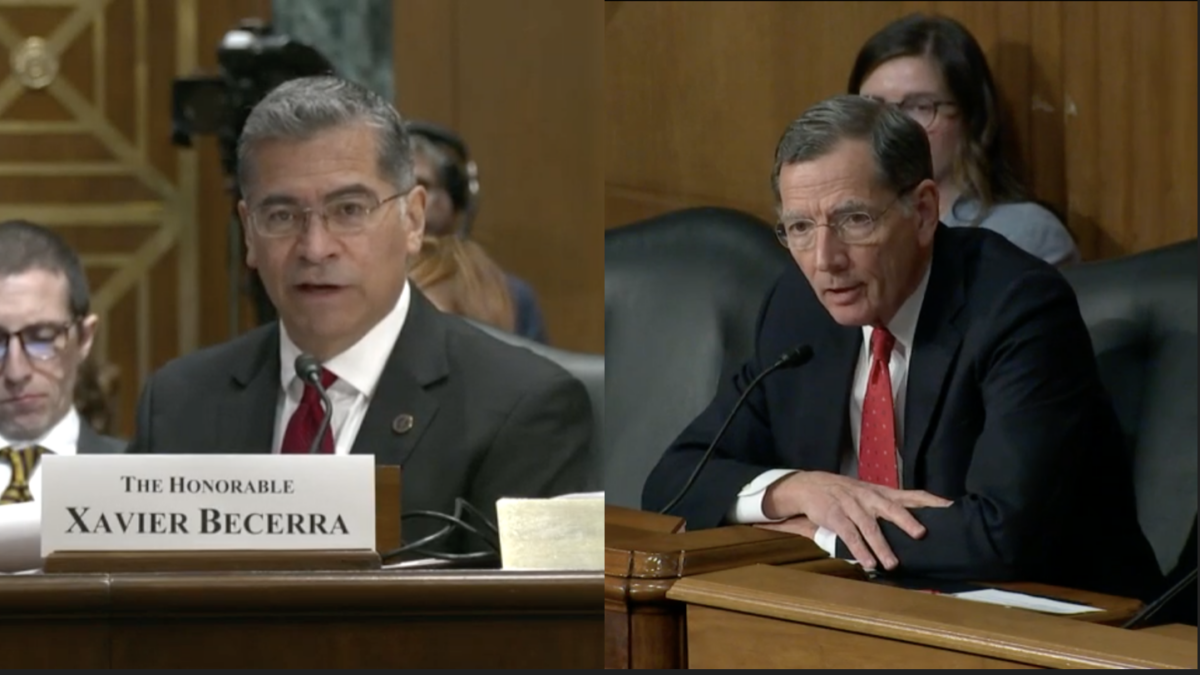
In the current political climate, there is something curious about being a first generation immigrant and criticizing the Progressive Left. It shouldn’t raise any eyebrows, but it does. It’s not quite taboo, but seems uncommon enough that it warrants trying to make sense of it. I’m a DACA recipient, so I might even be accused of biting the hand that feeds me.
Should that be the case, it’s unfortunate and partially speaks to the confusion I am trying to address—that is, the belief that conservative thought and the immigrant’s plight are mutually exclusive.
On the other hand, however, to some this will read as an apology for those who break the law, or as an attempt to revive the thesis that Latin American immigrants are natural conservatives. In any case, my goal is simply to clarify how immigrants became political pawns for the Left, and to suggest that DACA recipients will be okay.
How Leftist Ideology Hurts Immigrants
I will take as my point of departure a popular adage within the immigrant community: No soy de aquí, ni soy de alla—I’m not from here, nor from there. That many immigrants find themselves in limbo concerning their living situation is obvious enough. More troubling, however, is that immigrants are also in limbo concerning their value system. And it seems that Leftist ideology is what pushes the immigrant community to a misty borderland where they are told the values of the old country are oppressive, and that the values of the new country are designed to perpetuate their oppression.
“Leftist ideology” is no doubt a blanket term, and I don’t mean to flatten the nuances that exist within that mode of thought. For the time being, I will use the term to mean simply this: the belief that Western values are inherently oppressive, and that we are able to create a better value system—one preferably designed by a diverse committee.
The classroom has been one of the main settings for the propagation of Leftist ideology and the indoctrination of hundreds of thousands of first and second-generation immigrants. I say this as someone who has invested the last decade in higher education.
In the classroom, the narrative about immigration is one of oppression dating as far back as the conquest. It goes like this: the top-down structure of society in the Iberian Peninsula was carried over to the New World and rooted itself in present day Latin America. Pretensions of religious and racial superiority brought by the Spanish never faded and thus, the clash of cultures presses on. The top-down structure is so engrained in Latin American culture that the poor developed a passive acceptance of their underprivileged life—call it false consciousness. Thus, their fatalistic outlook is part of what prevents the poor from effectively rising and overcoming. When change is sought, power holders easily subdue an impoverished and uneducated populace. Consequently, wealth and power remains in the hands of the few.
Then the narrative takes a baffling twist: Without access to upward mobility in their own land, the masses of Latin America are forced to head north to the promise land. Except that the promise land is then framed as the epitome of a brutal imperialistic power and the very source of Latin America’s problems.
After a few more twists and turns, the conclusions that are drawn are 1) the number one enemy for immigrants is capitalism—a ruthless system lorded over by white males. 2) Immigrants are prototypical agents of change—so bring on the protests and the Che Guevera t-shirts. And 3) immigrants are best served by working in coalition with anyone else who finds American values oppressive—minorities unite!
The Left’s Narrative Leaves Immigrants In No Man’s Land
Challenging the validity of the narrative, which may have kernels of truth, is beyond my scope here. My focus is on its more immediate consequence: it has left immigrants in no man’s land. As a good friend has keenly observed, immigrants are at once alienated from their cultural heritage and discouraged from assimilating into the broader American culture.
The insidious part is that after decades of encouraging students to build their identity around their status as oppressed immigrants, the narrative is no longer pure fiction. It’s been a classic case of manipulation through description. Immigrants may not be natural conservatives. But they also aren’t natural progressives. Immigrants are like everybody else: they are influenced by what is said about them and their environment.
For years, Latin American students made it through higher education being told their cultural heritage is only about identity politics and unfulfilled idealism. For years, they were told the promise land is actually a lion’s den. For years, students have walked away believing that becoming custodians of progressive ideas is the only way to right this wrong. And for years, this narrative strived to level the differences between immigrants and any other politicized minority group that rebels against traditional Western values.
It’s a powerful narrative with tremendous appeal. It has victims and villains, and the Progressive Left has propped itself up as the saviors.
Young Immigrants Have Abandoned Their Traditions
In the meantime, and much to the displeasure of each generation of parents who migrated here, traditional elements within the immigrant community—such as reverence for God, family, and work—have been gradually exchanged for the infinite promise of social change.
It was a self-fulfilling prophecy long before Trump ever made it onto the scene. Initially, his careless rhetoric served to justify Lefty academics and politicians. Now that he has rescinded DACA, they are truly cashing in, speciously saying, “I told you so.”
A few years ago, I visited a couple of friends in New York City. One of them was a Manhattanite, the other was from the Middle of Nowhere, U.S.A. Both were eager to show me around, so we ran the streets for a solid week. Looking back, I can see how proud they were of being part of the New York City hustle. We’d stop with venders all over Chinatown and they’d haggle over trinkets for the sake of haggling. At the time, it all seemed disagreeable to my Midwestern way of seeing things. So I was surprised when, at some point during one of our late-night talks, nostalgia settled in and the Manhattanite lamented that the city had lost its edge since the 80s and 90s, when being a New Yorker and being tough went hand in hand.
A similar situation is at play with DACA recipients. The lack of papers poses many challenges, but over the next six months the political and ideological theater will continue. At the universities we’ll see a lot of posters and impassioned speeches, perhaps even some virtue signaling. Univision and its English-speaking equivalents will be there, having a heyday with their usual fear mongering. Ultimately, over the next six months the immigration experience will be increasingly reduced to something or another about safe spaces.
Today’s DACA Recipients Don’t Know True Danger
But on the whole, DACA recipients have it made. Something that doesn’t get talked about very often is the incredible network of support that has been there for us, even before the days of DACA. The people who make up that network don’t get the credit they deserve. They are an “aristocracy of the sensitive, the considerate and the plucky…thousands of them perish in obscurity, few are great names…their pluck is not swankiness but power to endure, and they can take a joke.”
As for the actual heroes of the immigration experience, that’s our parents, a generation of mavericks. In times like this, DACA recipients should be more like them. They are people of action, and regardless of their immigration status, they continue running the race before them, quietly.
There wasn’t anything safe about meandering through the jungles of Central America, fending off heartless Mexican federales, trekking across the Sonoran Desert, or wading across the Rio Grande. They stood at the banks and said, “the hell with it, let’s go.” There was nothing safe about not knowing how to drive. There also wasn’t anything safe about going to the shadiest trailer parks in town and cutting deals for fake papers, much less having the backbone to use them. There was nothing safe about fighting off Kansas winter winds in dumpsters outside the meatpacking districts.
Not having papers in the ’80s and ’90s used to have an edge.









